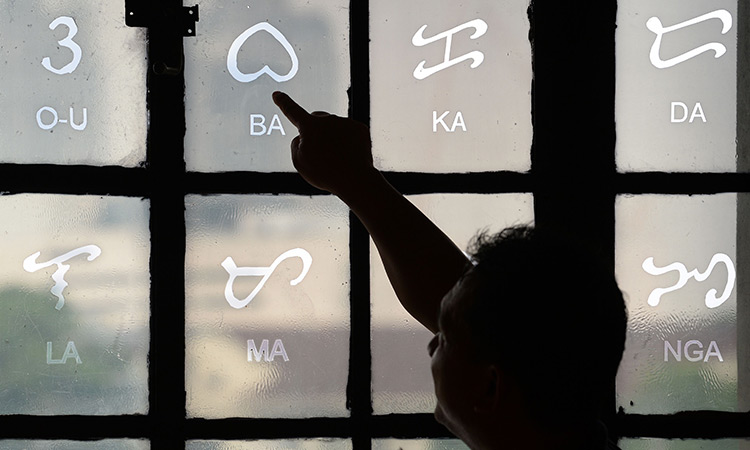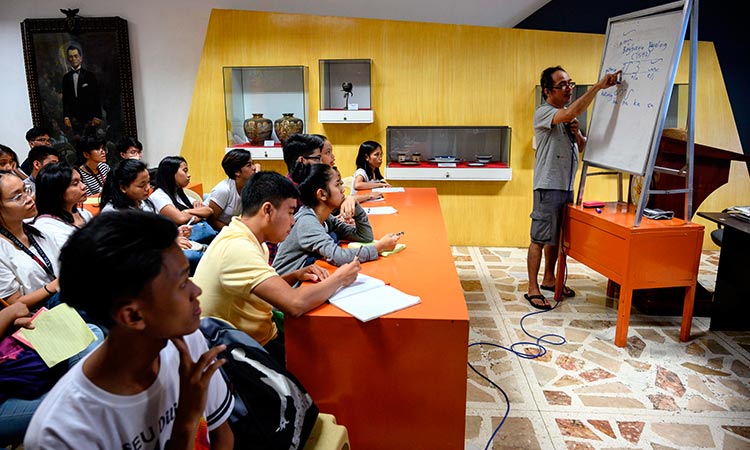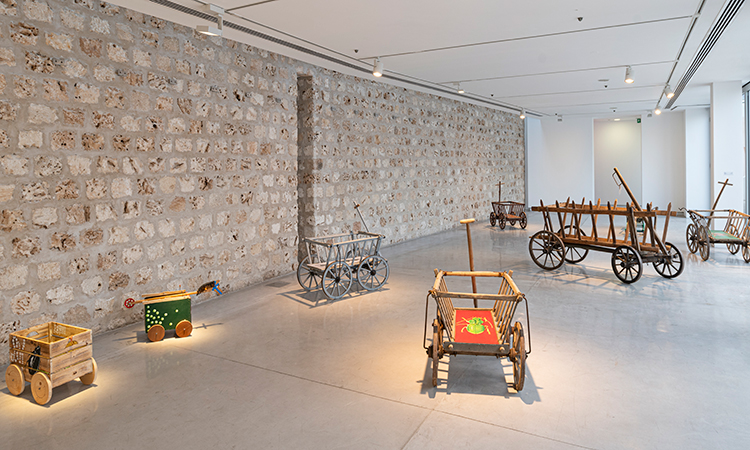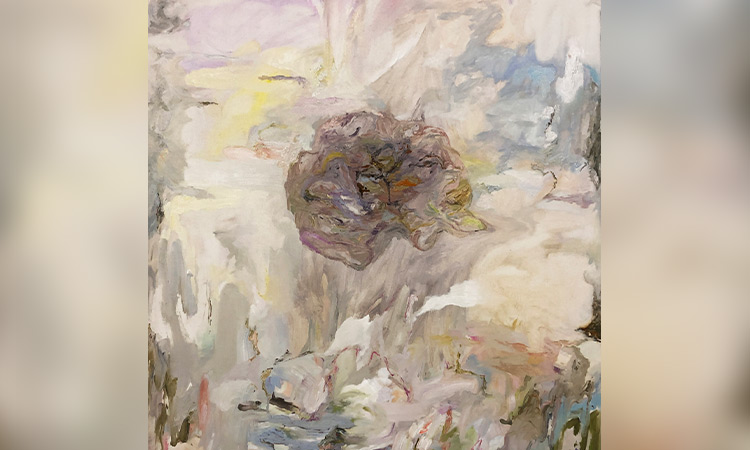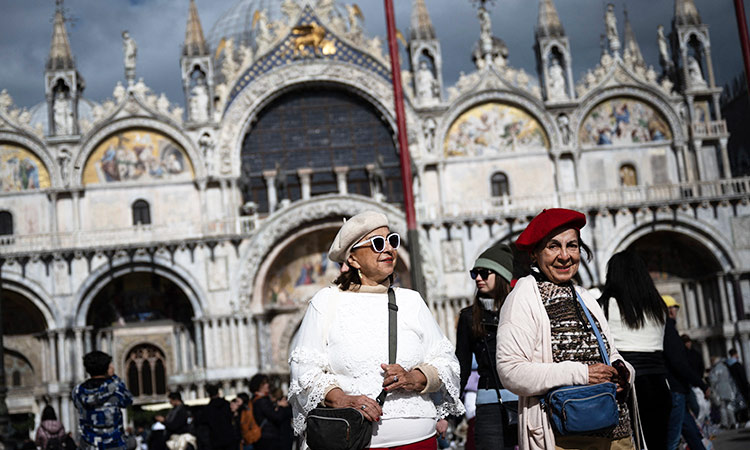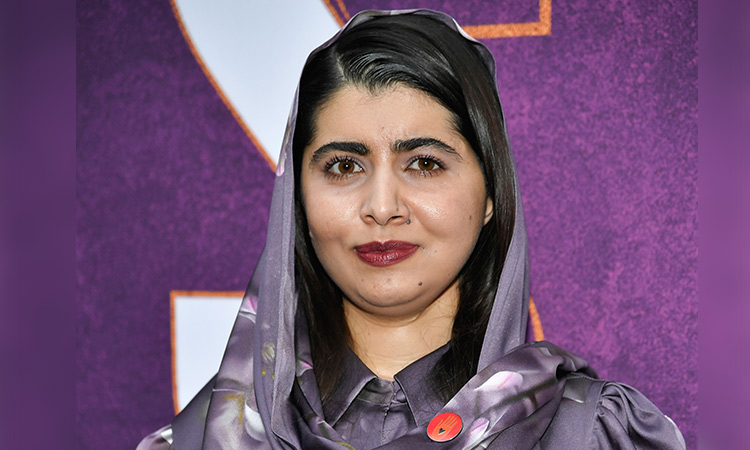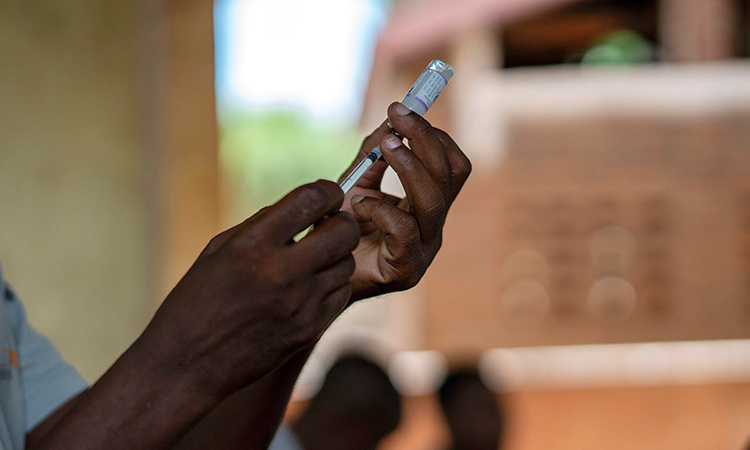Ancient Philippine script revival spells debate
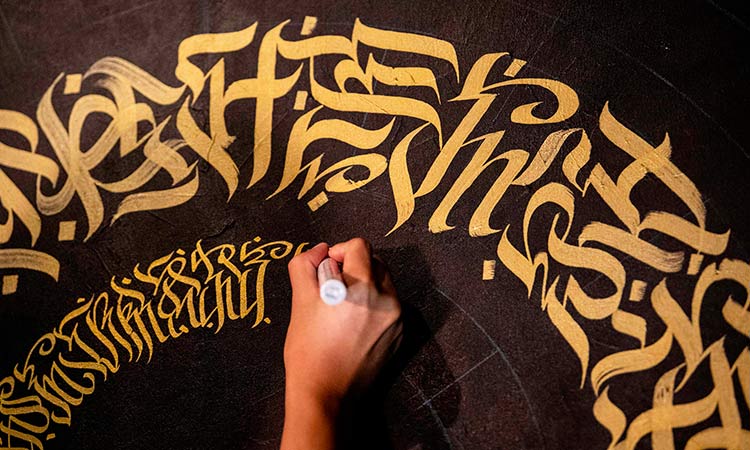
An artist doing calligraphy using the indigenous script known as Baybayin. AFP
With deliberate golden strokes, artist Taipan Lucero proudly brings an ancient script back to life, in the hope of promoting an endangered but contentious part of the Philippines' heritage.
Once confined to history classes, Baybayin, a 17-character indigenous script used before Spanish colonisation, is making a comeback among the nation's millennials, young professionals and diaspora.
Even as technology renders writing by hand outdated, online clips of calligraphy and digital fonts for the script have gripped the smartphone generation and now Baybayin — last used hundreds of years ago — is appearing on everything from tattoos and t-shirts to mobile apps.
"We need to balance this carefully. We need Filipino as a bridge language but we should also appreciate the languages of all communities.
Proponents hail the curvilinear text as a crucial part of Philippine identity, but in a country with 131 government-recognised languages — critics say investing in the promotion of one ancient text over others is controversial and impractical.
National Museum researcher Leo Batoon pointing to a Baybayin character. AFP
Baybayin was the form of writing used before the Spanish arrived in 1521 and missionaries had to learn it initially to spread Catholicism before forcing locals to adopt their Roman alphabet, historians say.
Wiped out
Advocates say reviving Baybayin will provide an antidote for a nation grappling with its colonial past and is a way of celebrating indigenous history.
Many are proficient in English because of the American occupation — Spain ceded control to the US in 1898 — and the Philippines only became independent in 1946.
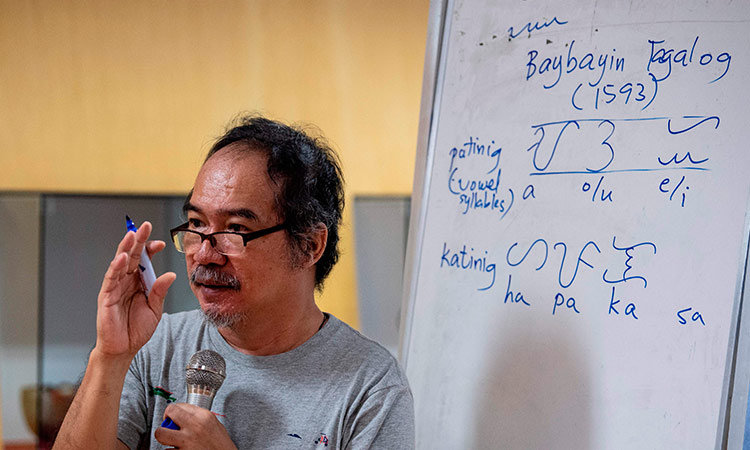
Leo Emmanuel Castro teaching students the indigenous script known as Baybayin. AFP
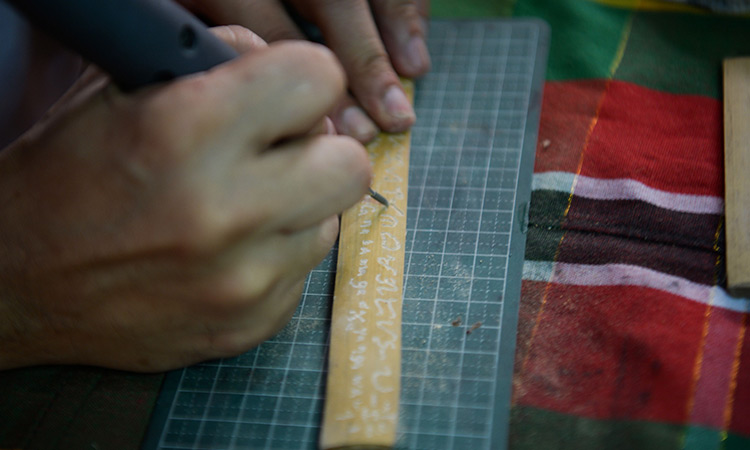
Leo Emmanuel Castro inscribing indigenous Baybayin script onto a piece of bamboo at his shop in Manila. AFP
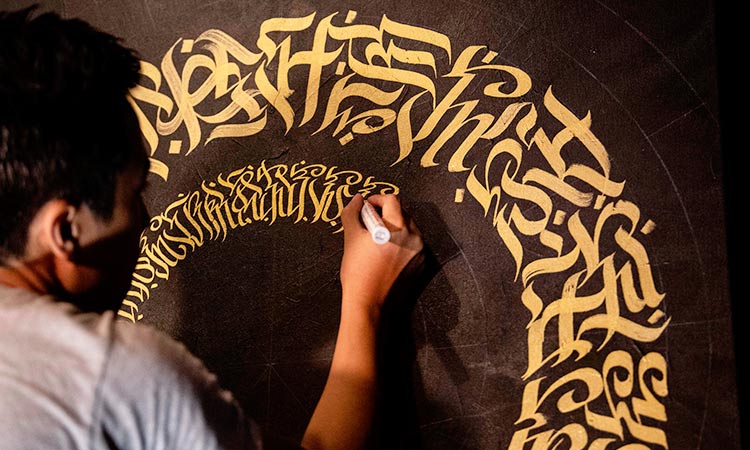
artist Taipan Lucero doing calligraphy using the indigenous script known as Baybayin. AFP
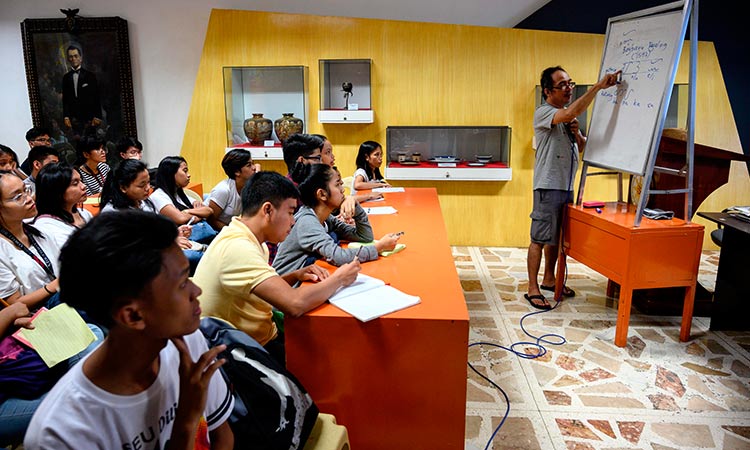
Baybayin, the indigenous script, used before Spanish colonisation in 1521, in Manila. AFP
"It's a great achievement to invent our own writing system," Leo Emmanuel Castro, executive director of cultural group Sanghabi, told AFP.
"Our language is gender-neutral. Professions and pronouns have no sex whereas English is very sexist," he added.
Their anger is rooted in a 1937 proclamation that Tagalog be the basis of the national spoken language now called Filipino, and they see the revival of the Baybayin text as another blow for the nation's linguistic diversity.
"The Philippines has become a country only for the Tagalogs," explained Michael Pangilinan, an advocate of the Kulitan script of Pampanga province, who warned local identity would be "completely wiped out" if using Baybayin becomes mandatory.
Leo Emmanuel Castro teaching students the indigenous script known as Baybayin. AFP
Mere novelty?
"When it comes to a national discussion, you need to use the dominant language known by the majority," countered Jay Enage, chairman of Baybayin Buhayin, a group lobbying for the bill.
Virgilio Almario, chairman of government commissions on language and culture, said it was important to walk the line between losing scripts to extinction and being practical about usage.
"We need to balance this carefully. We need Filipino as a bridge language but we should also appreciate the languages of all communities," he said.
"The heart and soul of a country is its culture. The problem is that we don't value it due to our colonial mentality," Filipino-American Baybayin artist Kristian Kabuay told AFP.
He added: "It's part of our culture and our identity and if we forget about it, we throw away part of ourselves."
Agence France-Presse
